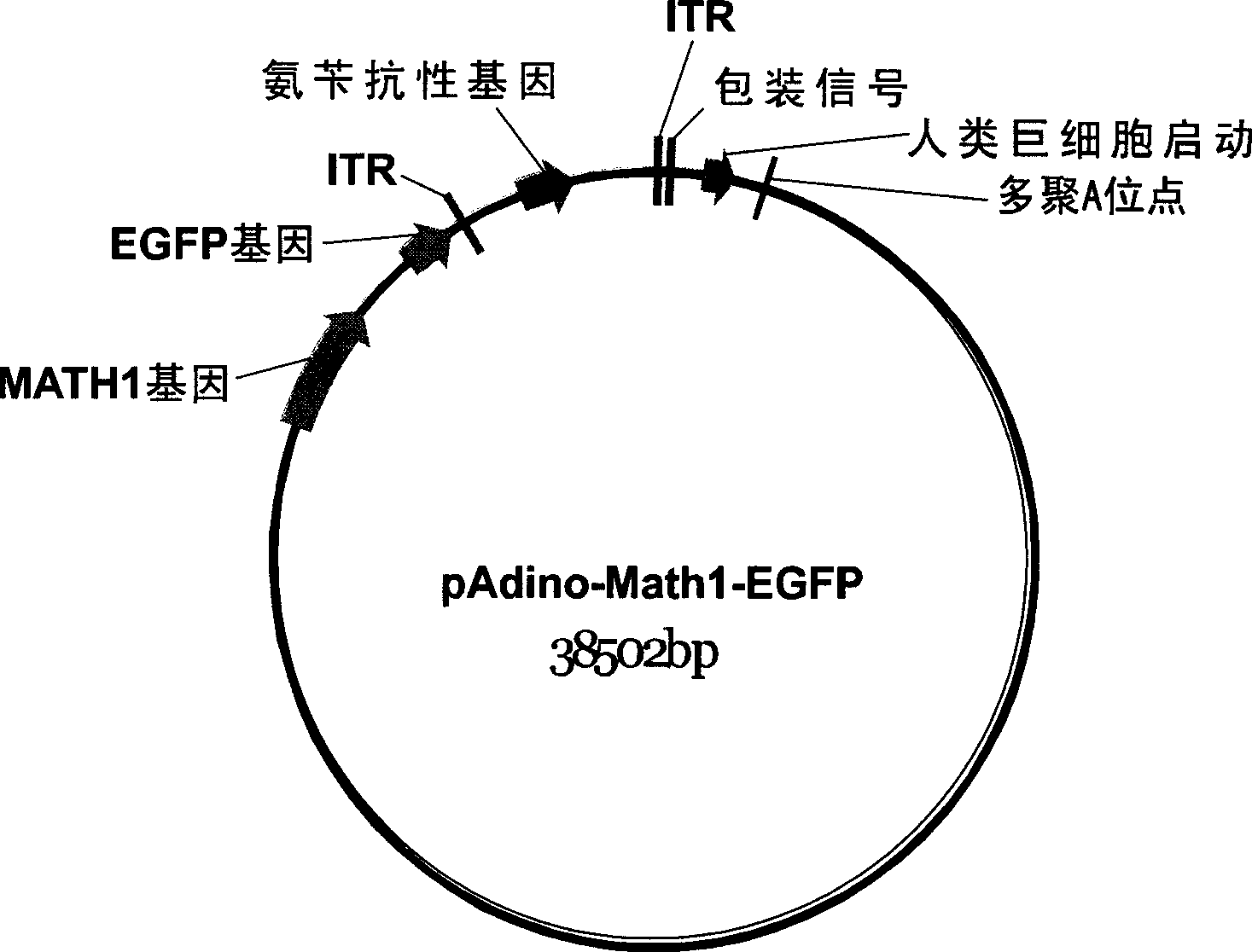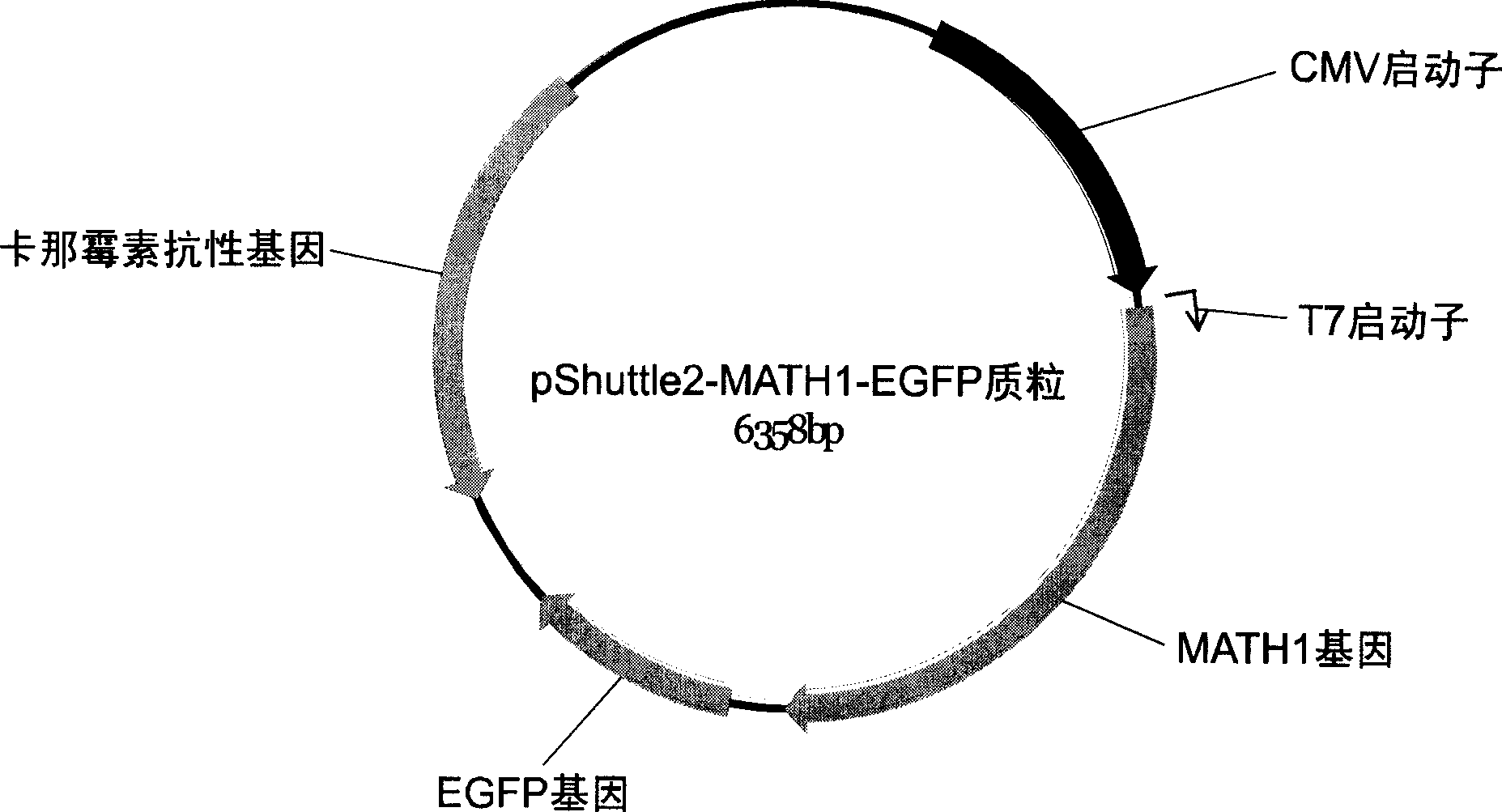Therapeutic effects of Math1 gene pairs forsensorineural hearing loss
A gene and adenovirus technology, applied in the field of construction of recombinant adenovirus vector for inner ear specific expression gene Math1, can solve the problems of restricting the application of stem cells and difficult separation
- Summary
- Abstract
- Description
- Claims
- Application Information
AI Technical Summary
Problems solved by technology
Method used
Image
Examples
Embodiment 1
[0046] Embodiment 1, plasmid digestion reaction:
[0047] The appropriate reaction temperature and reaction buffer were selected according to the conditions required for various restriction endonuclease reactions. The reaction system was 20ul, and the dosage of each enzyme was 5U.
[0048]
[0049]
Embodiment 2
[0050] Embodiment 2, glass milk method reclaims DNA fragment:
[0051] After the DNA sample undergoes electrophoresis, cut off the DNA fragment to be recovered under ultraviolet light, add 3 times the volume of sol solution, bathe in 60°C water for 5 minutes, add 10ul glass milk, leave at room temperature for 5 minutes, centrifuge at 8000rpm for 1 minute, and remove the supernatant , add 125ul rinse solution, centrifuge at 8000rpm for 1 minute, remove the supernatant, then add 20ulTE buffer, mix well, bathe in 60°C water for 5 minutes, centrifuge at 8000rpm for 1 minute, recover the supernatant for later use.
[0052] Ligation of recovered fragments to the vector:
[0053]
[0054] Ligation at 14°C for 18 hours.
Embodiment 3
[0055] Embodiment 3, recombinant transformation Escherichia coli DH5α bacterial strain:
[0056] Take 5 ul of the ligation product, add 100 ul of competent bacteria, mix well, ice bath for 30 minutes, heat shock at 42°C for 1 minute, ice bath for 2 minutes, add 800ul LB medium, and incubate at 37°C for 1 hour. Take 100 ul of the bacterial solution and spread it on a plate containing ampicillin, and incubate it upside down at 37°C for 16 hours.
PUM
 Login to View More
Login to View More Abstract
Description
Claims
Application Information
 Login to View More
Login to View More - R&D
- Intellectual Property
- Life Sciences
- Materials
- Tech Scout
- Unparalleled Data Quality
- Higher Quality Content
- 60% Fewer Hallucinations
Browse by: Latest US Patents, China's latest patents, Technical Efficacy Thesaurus, Application Domain, Technology Topic, Popular Technical Reports.
© 2025 PatSnap. All rights reserved.Legal|Privacy policy|Modern Slavery Act Transparency Statement|Sitemap|About US| Contact US: help@patsnap.com



